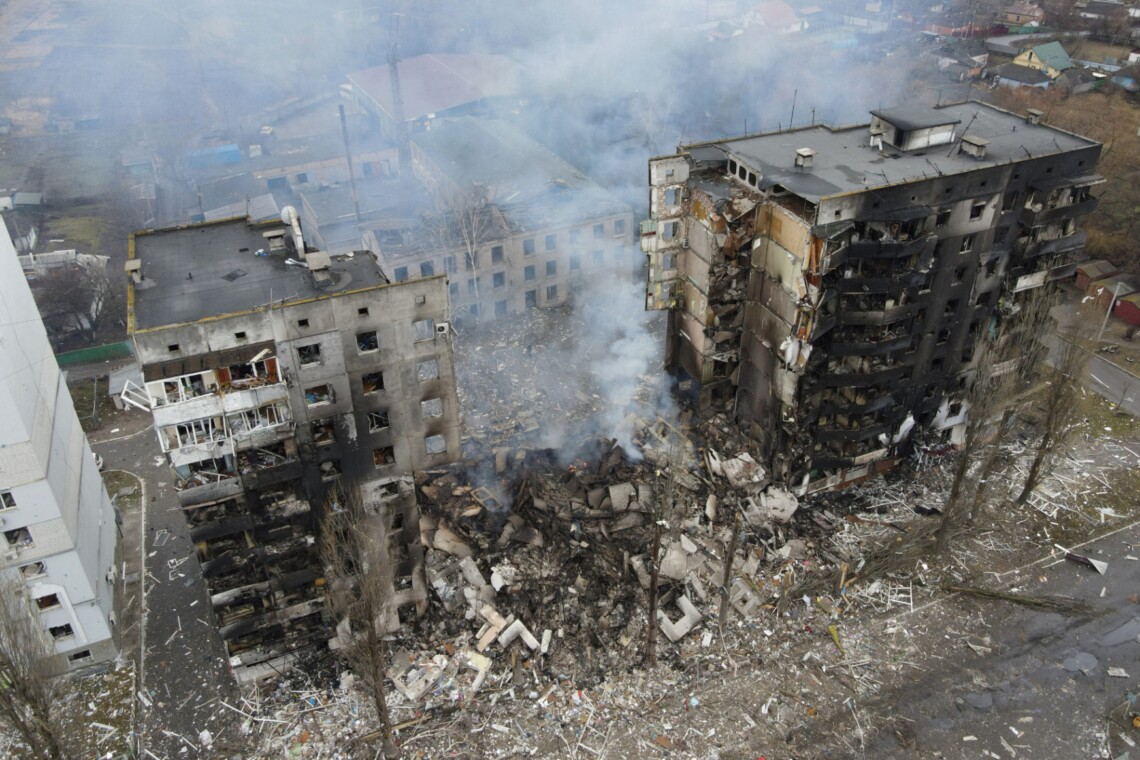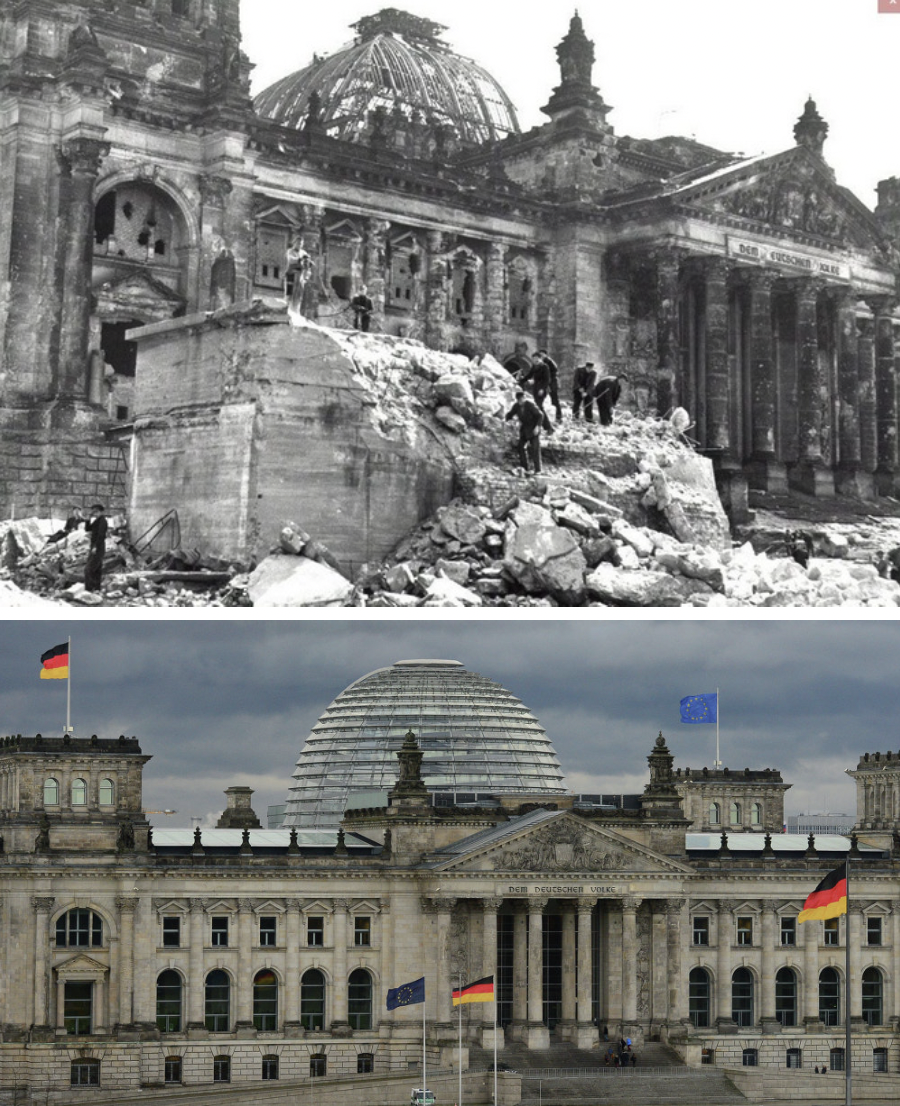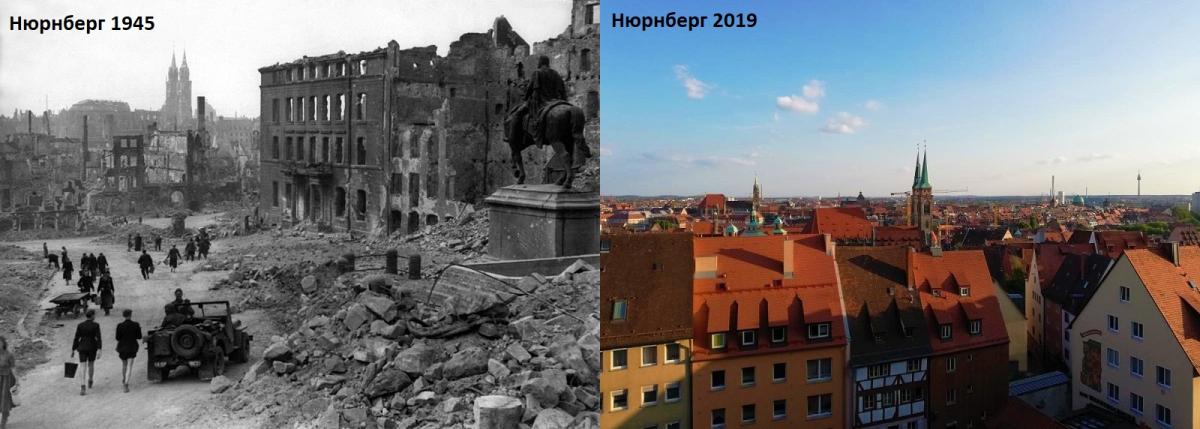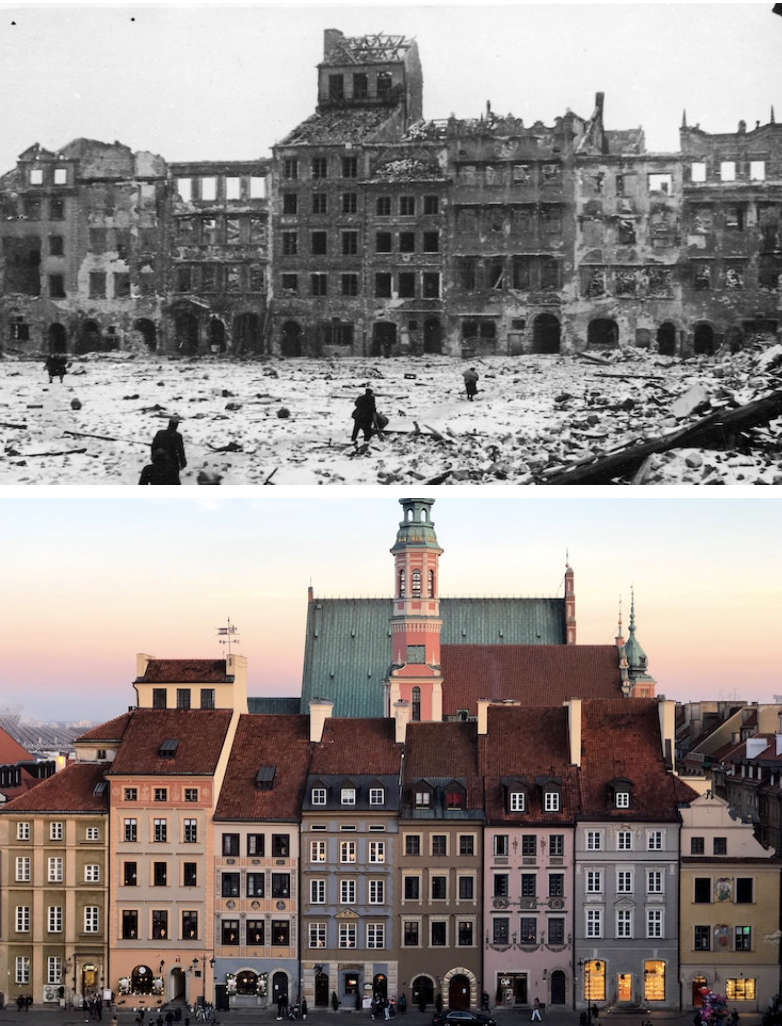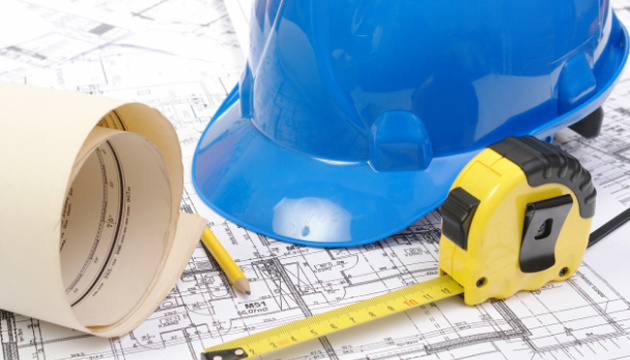"A person is given a new roof, but they remain under it with old memories": how Ukraine shall (not) be rebuilt
From February 24 to early April, russia fired nearly 2,000 different missiles across Ukraine. In addition to them, there were also systems of volley fire, targeted shooting by tanks and, of course, mines. All this is the destruction of lives and cities that we will have to rebuild.

Who should do it? How to rebuild destroyed cities so that they turn from post-soviet to European? And how not to ignore the national trauma in this reconstruction? "Rubryka" decided to clear it out.
What is the problem?
The war continues, but we already need to start building?
As early as April 14, Ukrainian officials claimed that nearly 220,000 Ukrainians had lost their homes since February 24. This number grows daily. In addition, the russians are bombing hospitals, schools, kindergartens and other infrastructure.
World architects agree that it is impossible to fully plan reconstruction until the war ends and it is possible to assess the full extent of the destruction.
The world-renowned British architect Norman Foster, for example, is already working on a general plan for Kharkiv, which is still being bombed daily. The Greek government has stated its readiness to rebuild the destroyed maternity hospital in the destroyed Mariupol. But further agreements and plans will not work until the war ends.
Kyiv-based urban architect and designer Viktor Bilous says the same: "Everything should start with a large amount of analytical work of specialists: economists, psychologists, developers, technologists. It takes a long time.
For example, European architects say that, above all, there should be analytical statistics. How many people left? How many moved? What are the specialties of these people? And how many people want to go back to where they lived? Many people will find it difficult to return to their homes psychologically. And it should also be included in the architectural concept.
We must first understand the purpose of this reconstruction so that it does not get worse than it used to be. All this takes time. At the same time, there is an urgent problem – people do not have housing, "the expert explains.
What is the solution?
Three stages and the cases of Poland and Germany
The world has already seen more than one war and rebuilt more than one city. For example, the restoration of Berlin after the Second World War is still going on in some places. And another German city, Nuremberg, was rebuilt very quickly, because it was chosen to hold the tribunal. However, the builders' task was speed, not quality, so people in Nuremberg's post-war reconstruction still complain about the need to repair something all the time.
However, Ukraine has two advantages that allow it to avoid both protracted and low-quality reconstruction – this is, above all, the support of foreign partners and a much better technology than after the Second World War.
Victor Belous says that the reconstruction of Ukraine should begin to address the urgent needs of the people, but the process must be divided into three stages, two of which will provide Ukrainians with temporary housing.
"The first phase is housing for internally moved people, as accessible as possible. Let's call them containers. People should stay there for a maximum of six months or a year. Then temporary housing. Improved so that people can live there for a year, two, three, but no more. There should be enough time for the third stage – the construction of permanent housing," Victor Belous says.
The architect notes that the so-called soviet "panels" were also planned as a temporary solution, but eventually became a haven for many people for decades without available alternatives.
"Now the speed can ruin the quality. For example, foreign colleagues say that it is very important to build rehabilitation centers with temporary housing and comfortable infrastructure around it. For the military, their families, migrants… Europe pays a lot of attention to psychology, while we ignore it. A person is given a new roof, but they remain under it with old memories and thoughts. And their environment remains the same – the victims. Accordingly, when talking about architecture, we should talk not only about where a person will live, but also how s/he will live," – said the architect.
Another question arises here. What is more appropriate – the construction from scratch or revitalization (restoration into the original form)? Here, the architects' response will be almost unanimous.
According to the expert, it makes sense to rebuild the previous one when it comes to buildings, streets or even entire cities, whose architecture has historical and aesthetic value. For example, the old part of Warsaw was restored after the war with an impressive accuracy, so walking around the houses of the fifties, you will feel as if the architecture of the city is pre-war, although it is not. Residential and other more modern areas were instead built in a new way.
If we talk about the architecture of Ukrainian cities that suffered the most from the war, almost all of them, except Chernihiv, were mostly rebuilt during the soviet era, when the city was built not for people, but for the system.
What is the problem?
Cities that were built on ideology
"Those cities were built on the ideological component. That is, there was a standard factory, and all settlements were built from the factory. Now we live in the era of market relations and creative industry. There is a completely different mechanism. It makes no sense to repeat the same. There will again be cars on lawns, kiosks near the crossings, ghetto areas. There will be all the same and no development," Belous says.
Among other things, there are a number of problems of Ukrainian cities that can be solved by taking advantage of the need to restore some areas after the war. Among them are the following:
- low inclusion and inaccessibility of cities to low-mobility groups;
- unsuccessful transport interchanges;
- inappropriate use of territories in city centers;
- insufficient security.
What is the solution?
Inclusion, economy and monuments in the center
"If you google the largest squares of cities, 9 out of 10 in Europe are post-Soviet cities. But what goes from it? The most expensive piece of land with a monument in the middle does not work for the city's economy and modern population development. It has to be vice versa. Everything has to be made for people.
The monument will be visited once a year for a holiday, wedding and on Saturdays. While the center must be crowded with people every day, so that the economy works every day, " the architect says.
According to him, the architecture of Soviet cities with wide avenues kills the development of small and medium-sized businesses. It is difficult to move from one such street to another. And in times when everything is decided by the market, a person should easily and smoothly move from one shop window to another, even when they are on different sides of the streets.
When it comes to inclusion, architects will have to think about people's routes, ramps and making everything accessible to everyone. Before the escalation of the war, there were about three million people with disabilities in Ukraine. Unfortunately, after russia's actions, this number will grow. And let's add to it elderly Ukrainians, parents with small children and pregnant women – all these are low-mobility citizens for whom the city should be accessible.
Also, when building new houses, we cannot forget about old enemies whose borders will not move anywhere. Therefore, the issue of security must be approached differently and radically.
"Let's consider Israel. The houses there are different from the Ukrainian ones. There are no basements that serve as bomb shelters, although they are not really designed for that. Instead, each apartment has a bunker. There is a common riser, a room of 8 square meters with one small window meter by meter, which closes with a bolt. The walls of this room are made of reinforced concrete. The house will fall, but this riser on all floors will remain whole.
Our basements are also not made according to bunker technologies, because there should be additional evacuation exits, our own exhaust systems, and our own heating. It is difficult for the elderly to go down and it is usually very cold there.
But in order to implement this, it is necessary to improve the SBC (state building codes, – ed.). In matters of security, it is necessary to involve foreign specialists with practical experience… Who will be responsible if something gets into new houses without taking security into account? "- the architect says and asks a logical question.
What is the problem?
"Our architects never designed new cities"
There is no Ministry of Architecture in Ukraine. Instead, there is the Ministry of Infrastructure and the State Inspectorate for Architecture and Urban Planning of Ukraine. At present, according to the architectural community, these or other state structures cannot create a full-fledged dialogue on the development of a single concept of reconstruction.
I think we need to attract top architects. We have talented professionals, but there are no architects who have experience in rebuilding cities, because we have never had one. If you take new modern cities, everything is taken into account – digitalization, ecology, and sustainable development. If we restore what we have, all the same communications, do we need it again? What will our development be then? " – Victor Belous explains.
Designers and architects are already working on the projects for memorial complexes, particular damaged buildings or streets. But it is currently impossible to assess the extent to which all our new needs are taken into account and which of these projects will be implemented.
What shall we do with it? Initiate a dialogue. But so far it does not seem to sound clear enough, so this time "Rubryka" ends the article not with a solution but with a problem. And hopefully, it won't last long.



